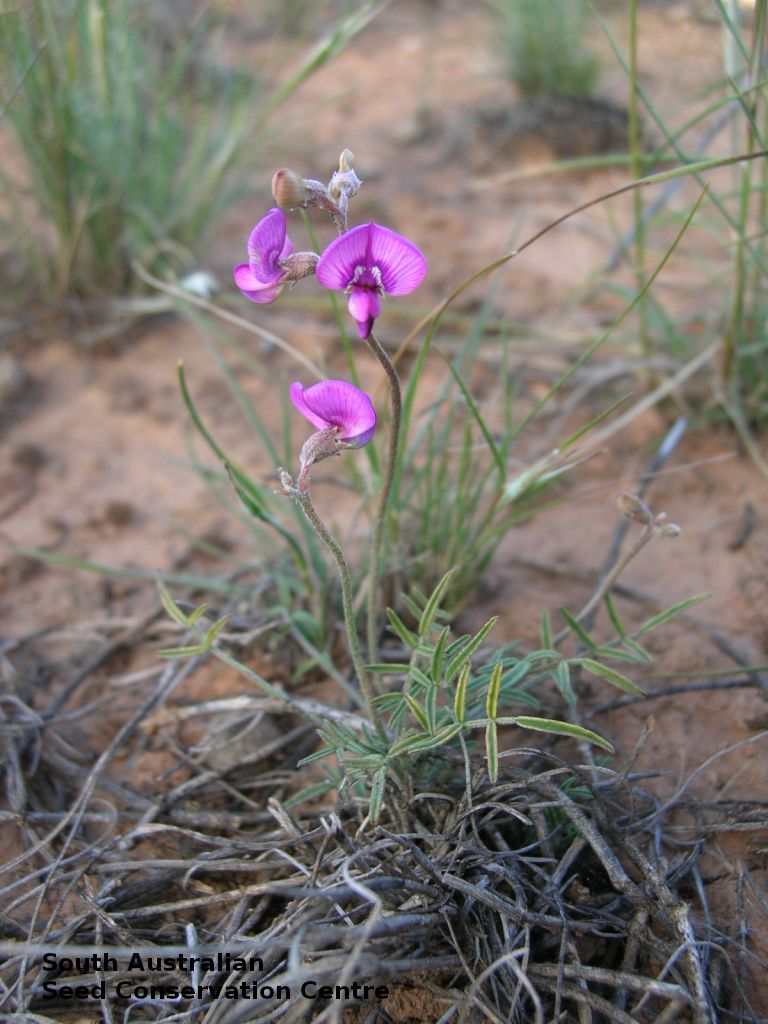


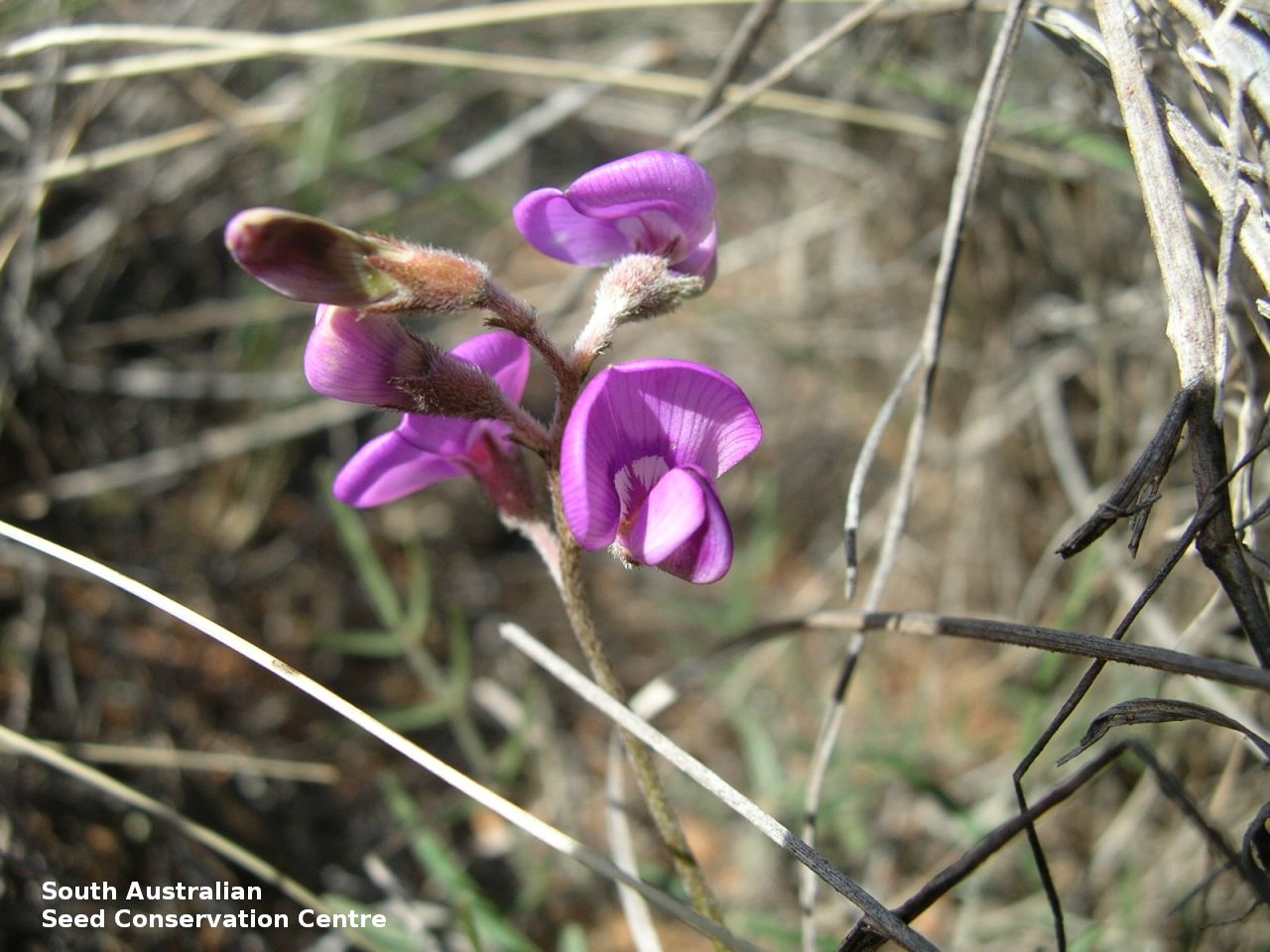
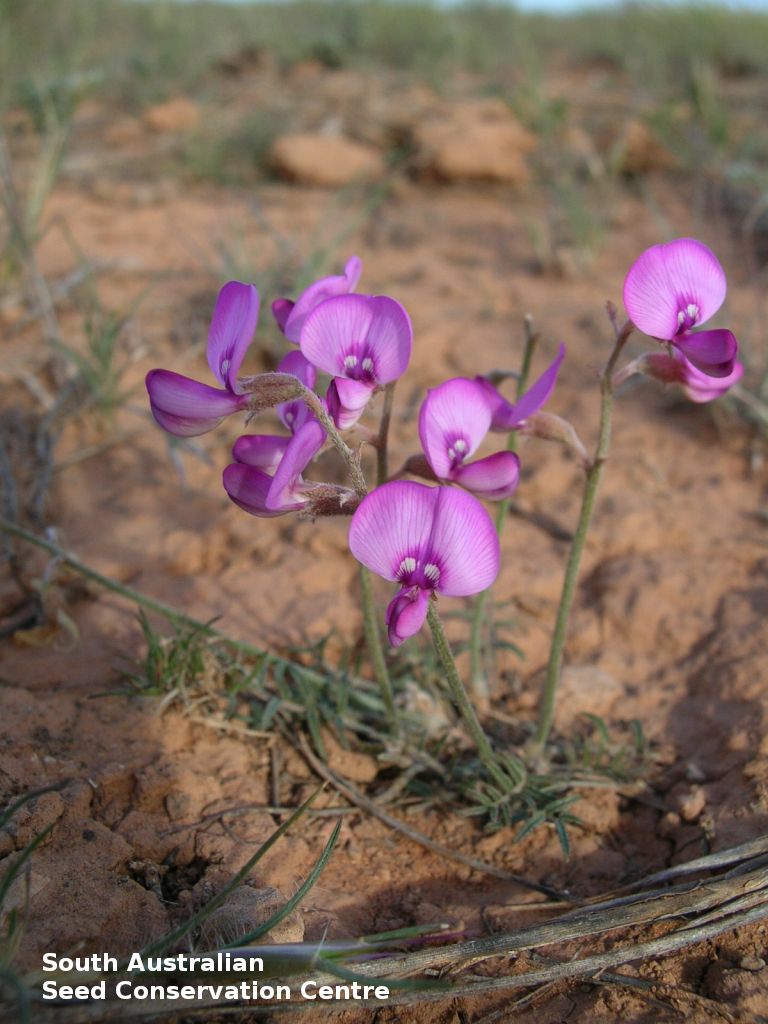
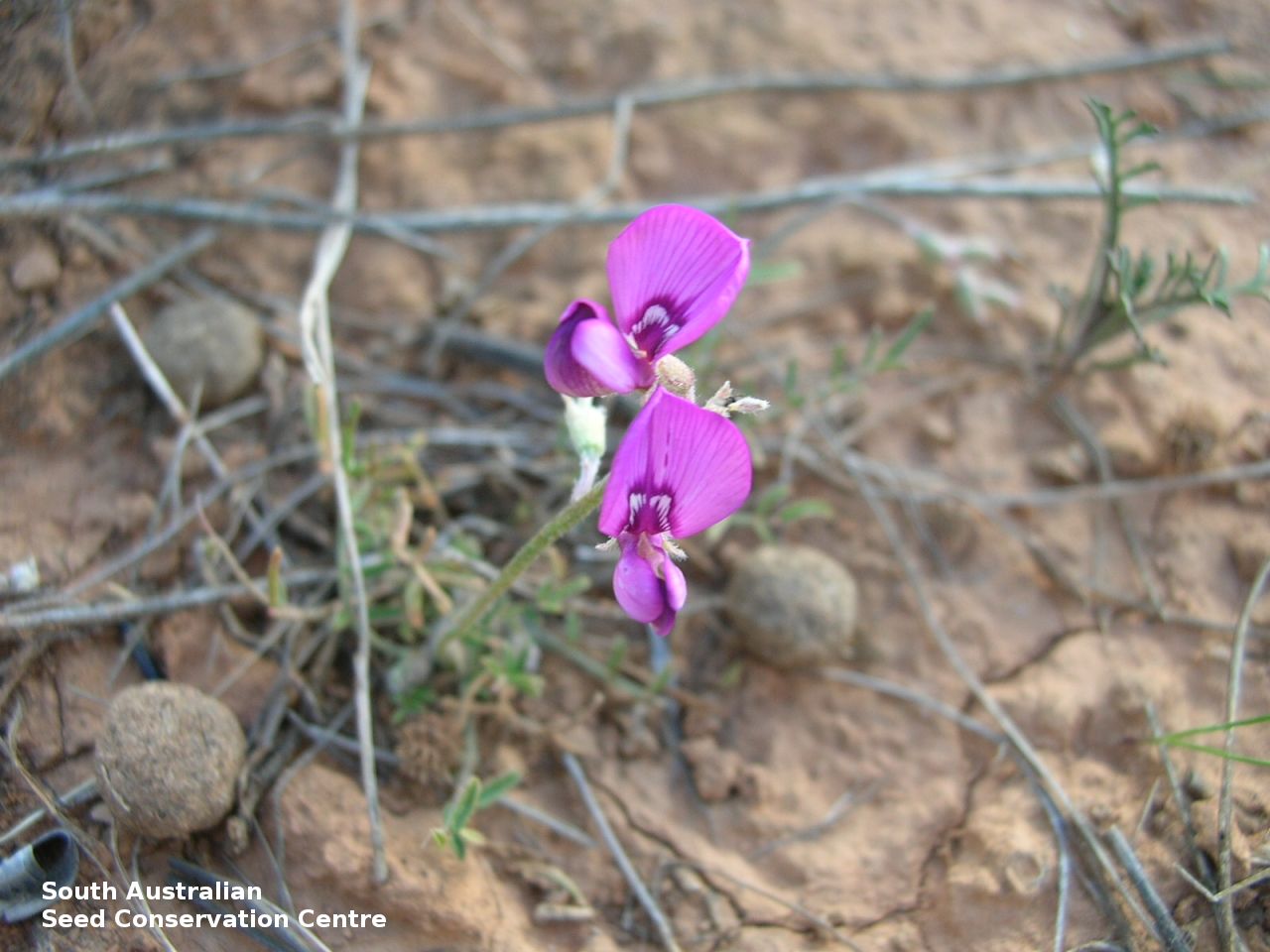
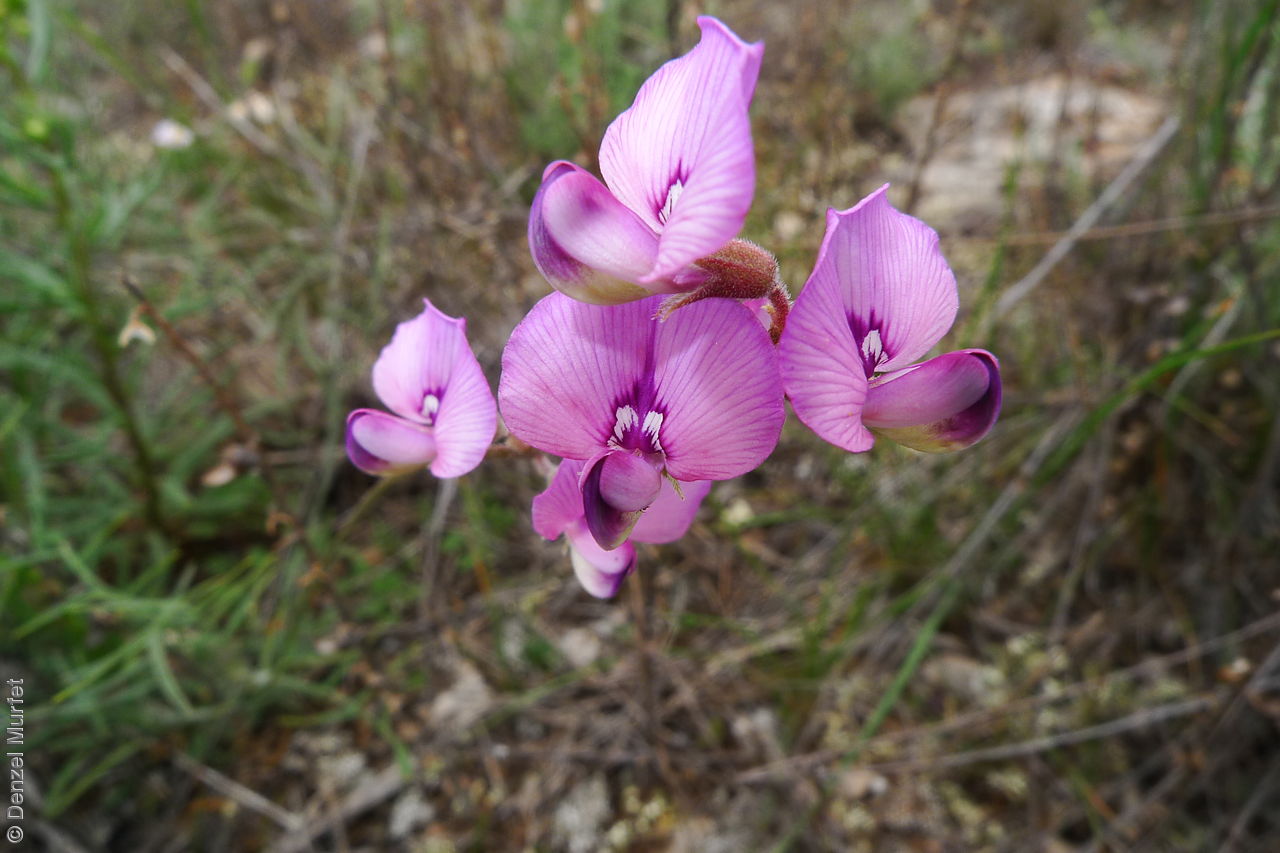
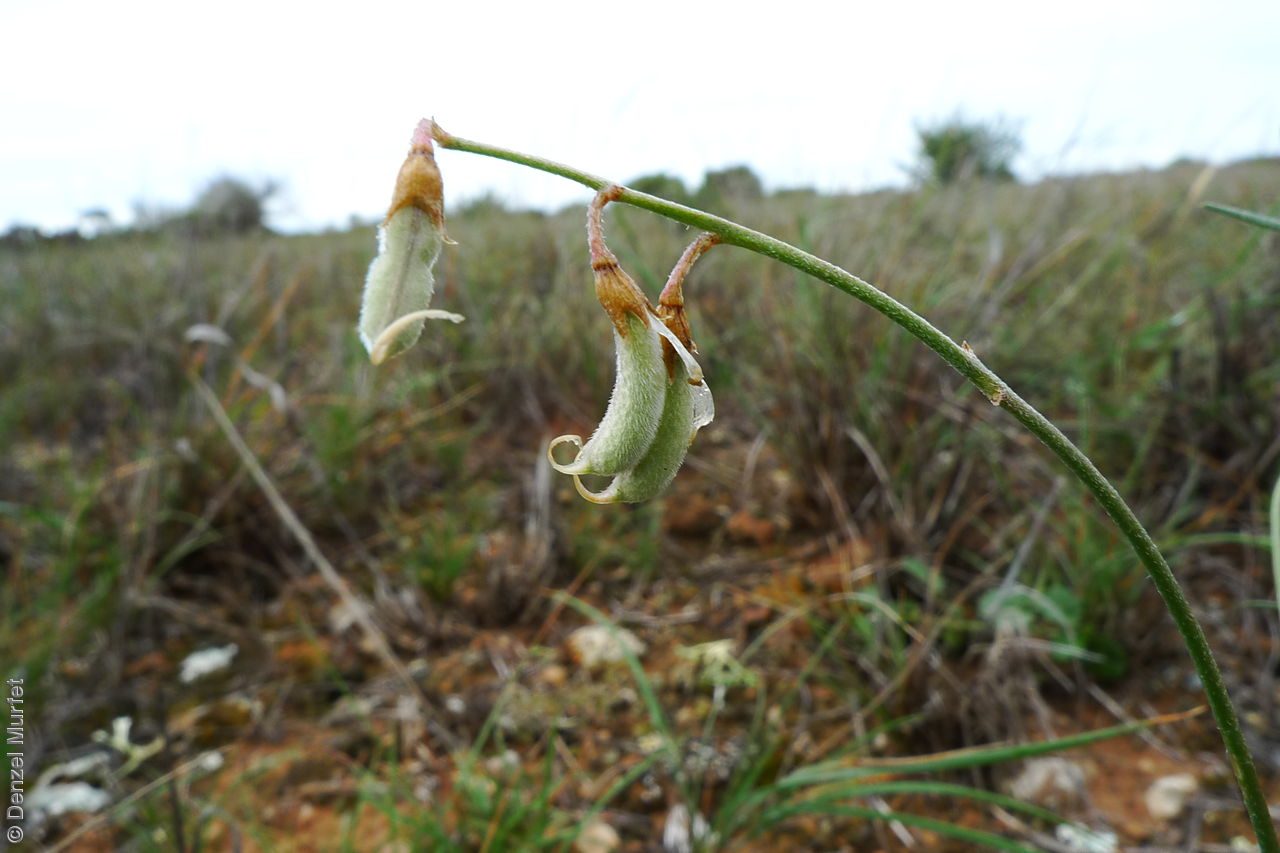

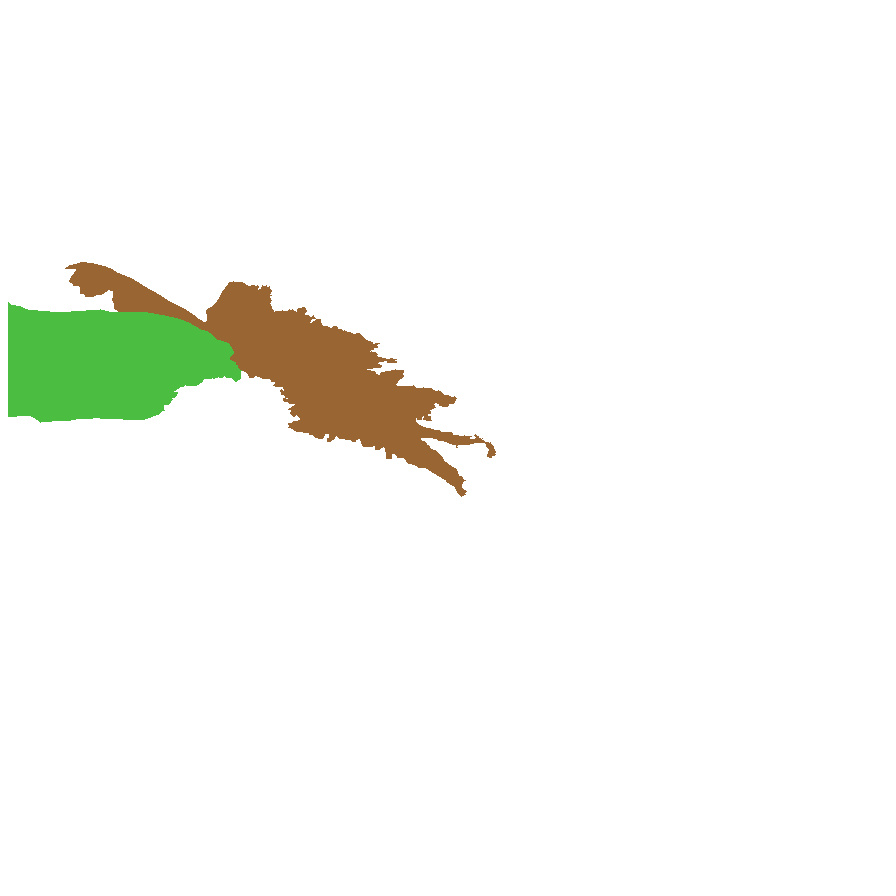
Etymology
Swainsona named after Isaac Swainson (1746-1812), an English scientist and horticulturalist who had a private botanic garden near London. Campestris from the Latin 'campus' meaning plain, alluding to the species habitat on the Nullarbor Plain.
Distribution and status
Found in the far south-western part of South Australia, growing on open, sandy to clayey loamy soils in red limestone plains, treeless or in sparse woodland. Also found in Western Australia. Native. Uncommon in South Australia. Uncommon in Western Australia.
Herbarium region: Nullarbor
NRM region: Alinytjara Wilurara
AVH map: SA distribution map (external link)
Plant description
An erect or ascending perennial herb to 60 cm high, with many stems arising from a taproot and hairy stems. Leaves to 10 cm long with 9-11 leaflets, very narrowly lanceolate-elliptic, hairs on both surfaces. Inflorescence an erect spike to 25 cm long with 5-10 pink or purple pea-flowers. Flowering between July and October. Fruits are oblong stiff pod to 20 mm long and 5 mm wide, curved, covered in hairs. Seed embryo type is bent.
Seed collection and propagation
Collect seeds between September and November. Collect mature pods, those turning brown and contain hard seeds. Mature pods can be found lying on the ground next to the plant. When dried the pods become hard and difficult to open. Use a rubber bung to rub the pods or break the pods open with your fingers to dislodge the seeds. Use a sieve to separate the unwanted material. Store the seeds with a desiccant such as dried silica beads or dry rice, in an air tight container in a cool and dry place. This species has physical dormancy that needs to be overcome for the seed to germinate (e.g. nicking or softening the seed coat).